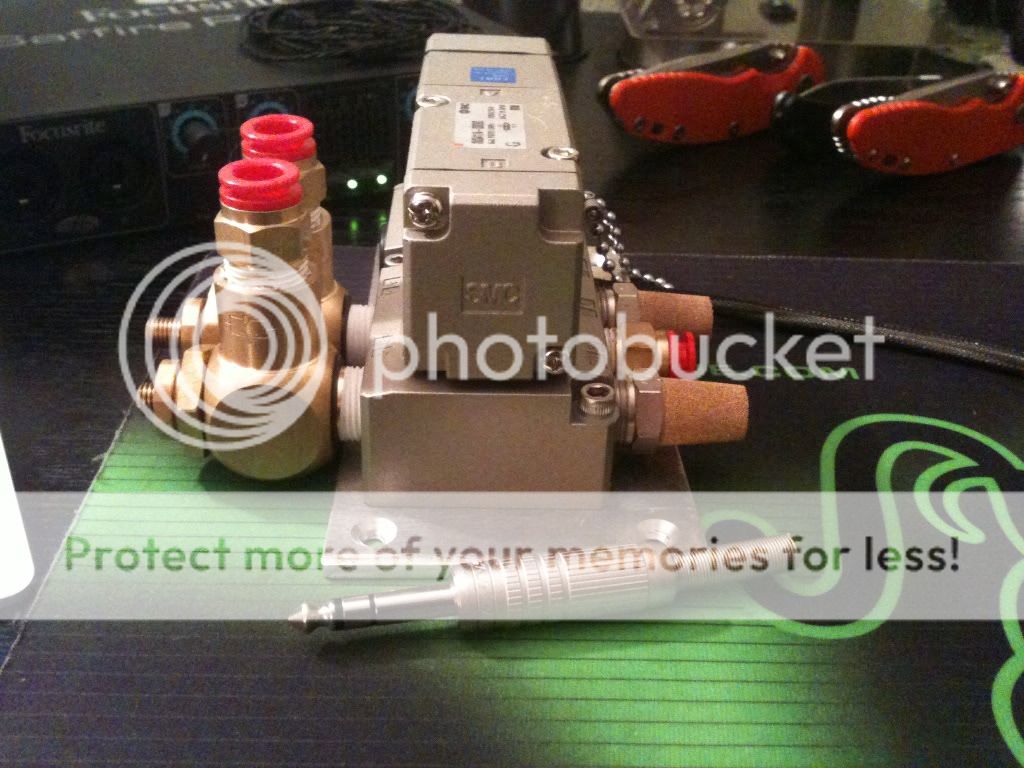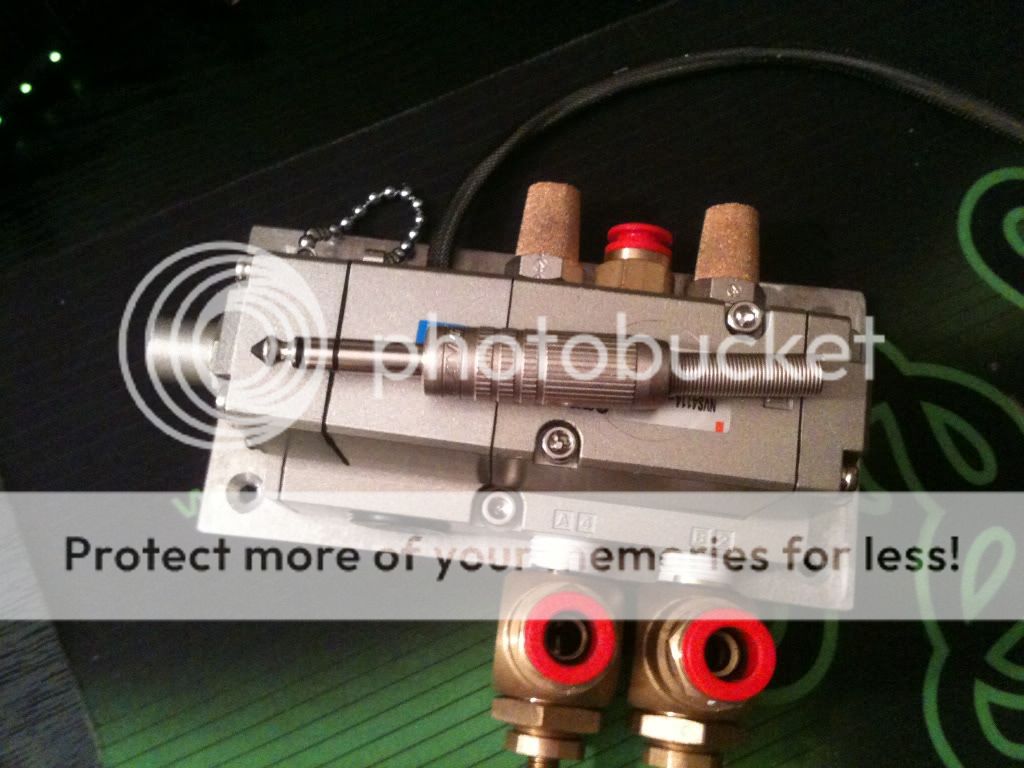I need to construct a door hard flat that the door can be opened by a motor or something remotely by stage manager. Due to where it is staged, it cannot be opened with stage hands or by actors. How does one find the motor and construct the door flat? An inexpensive and re-usable motor is highly preferable.
You are using an out of date browser. It may not display this or other websites correctly.
You should upgrade or use an alternative browser.
You should upgrade or use an alternative browser.
Remote motor
- Thread starterEustaceM
- Start date
Does it only need to open by itself, or does it need to open and then close by itself? If it just needs to open, something as simple as a clear piece of fishing line might do the trick, if your set allows you to run it where actors wont trip on it. Can the mechanism for opening the door be visible, or does it need to appear to open on its own power?
Does it only need to open by itself, or does it need to open and then close by itself? If it just needs to open, something as simple as a clear piece of fishing line might do the trick, if your set allows you to run it where actors wont trip on it. Can the mechanism for opening the door be visible, or does it need to appear to open on its own power?
The mechanism must open and the close the door and could be hidden within the set.
Does it only need to open by itself, or does it need to open and then close by itself? If it just needs to open, something as simple as a clear piece of fishing line might do the trick, if your set allows you to run it where actors wont trip on it. Can the mechanism for opening the door be visible, or does it need to appear to open on its own power?
I don't think fishing line or wire would be able to open the door due to its weight. The door is French style doors with a lot of elegant molds on it. It needs to be able to open by itself because it needs to have the sense of both elegance and supernatural
Without a welding shop, you are going to have to go with something like this: Power Access, Door Mount Residential Automatic Door Opener | 2300 Residential | Door Openers | Universal Design Specialists
It it can not be seen, its going to be a bit harder. All of this assumes the door opens like a proper onstage door... upstage and offstage. If it opens the other way, your up a creek. The only other way to do it is to have a hinge made that the door attaches to and it physically turns. That is going to be nearly impossible to fabricate without a welding shop. No matter what, a motorized version is going to cost at least a grand. Getting it to open smoothly like a person opens it will be even harder. Pillow blocks, limit switches, and a speed controller/VFD are not cheap. I would really look at either a false deck that you can drop a bolt into and have someone manually run from below or a bit of fish line to do the job. You could go with an electric actuator and that would work, however, its going to look like crap because there will be no smoothness to it.
It it can not be seen, its going to be a bit harder. All of this assumes the door opens like a proper onstage door... upstage and offstage. If it opens the other way, your up a creek. The only other way to do it is to have a hinge made that the door attaches to and it physically turns. That is going to be nearly impossible to fabricate without a welding shop. No matter what, a motorized version is going to cost at least a grand. Getting it to open smoothly like a person opens it will be even harder. Pillow blocks, limit switches, and a speed controller/VFD are not cheap. I would really look at either a false deck that you can drop a bolt into and have someone manually run from below or a bit of fish line to do the job. You could go with an electric actuator and that would work, however, its going to look like crap because there will be no smoothness to it.
Last edited:
There isn't a motor that would be considered budget that could do the job you want it to.
Id figure out a way to rig up a pneumatic cylinder to the door to open and close it. With a channel set to snap on you can use the light board to control a 110V electric valve.
Small valves and cylinders can be had cheap online, charge a compressor before the show (or run the air line far) and you have a number of openings and closings.
Id figure out a way to rig up a pneumatic cylinder to the door to open and close it. With a channel set to snap on you can use the light board to control a 110V electric valve.
Small valves and cylinders can be had cheap online, charge a compressor before the show (or run the air line far) and you have a number of openings and closings.
No, you would need a relay module. The non-dim attribute still can damage the dimmer or valve. If the OP has a Sensor rack, it would be the R20.
---
- Sent from my iPad using Tapatalk
And... YOU SHOULD NEVER CONTROL AUTOMATION WITH A LIGHT BOARD. EVER. PERIOD. DONE.
Light boards control lights. If you want, they can signal the control system that controls the automation, but THEY SHOULD NEVER CONTROL AUTOMATION.
Les
Well-Known Member
There isn't a motor that would be considered budget that could do the job you want it to.
Id figure out a way to rig up a pneumatic cylinder to the door to open and close it. With a channel set to snap on you can use the light board to control a 110V electric valve.
Small valves and cylinders can be had cheap online, charge a compressor before the show (or run the air line far) and you have a number of openings and closings.
Other than using the light board, it sounds like a decent idea. I just imagined "PFFFT!" (and the door opens with the force of a freight train; destroying itself and everything near it). Haha. I guess you could calibrate the valve for that *not* to happen.
Well if you have the ability to control the switch backstage that would be the best bet.
We used a light board for a prop that fired a pneumatic cylinder, it worked flawlessly, I take no responsibility for others attempting anything.
By using flow control valves and a pressure regulator you can adjust how fast and with how much force a cylinder produces.
I have cylinders that range from 3" stroke that you can overpower at 125PSI, I also have a 12" stroke cylinder that can throw you into the air. If you use a regulator the 12" cylinder can be overpowered with a single finger (that doesn't always work to actuate solenoid valves).
Here's my go to valve for pneumatics.
SMC NVS4114-0009D dual flow controls and exhaust mufflers added.
1/4" TRS for scale.


The piece this was used for fired at full open in the blink of an eye, and returned slowly in darkness.
We used a light board for a prop that fired a pneumatic cylinder, it worked flawlessly, I take no responsibility for others attempting anything.
By using flow control valves and a pressure regulator you can adjust how fast and with how much force a cylinder produces.
I have cylinders that range from 3" stroke that you can overpower at 125PSI, I also have a 12" stroke cylinder that can throw you into the air. If you use a regulator the 12" cylinder can be overpowered with a single finger (that doesn't always work to actuate solenoid valves).
Here's my go to valve for pneumatics.
SMC NVS4114-0009D dual flow controls and exhaust mufflers added.
1/4" TRS for scale.


The piece this was used for fired at full open in the blink of an eye, and returned slowly in darkness.
If you use the light board to control the door, you have too take some precautions. As when doing pyro the system needs a deadman switch. The effect should not be able to fire or in this case, move, without the safety button pressed down.
I would suggest installing a relay that controls the power to the solenoid. Not DMX relay, a DC relay that is controlled by the dead man's grip. The person holding the dead man's grip should NOT be in the booth. That person should be as close to the effect as possible. He/She MUST be able to see the effect and the area around it. If need be the person might bee seen by the audience but that is the sacrifice you have to make to make it safe.
If you make it not to be controlled by DMX you must make sure that you have too press two buttons at once or preferably you first have to flip a switch before pushing the button. This is in case you would drop the controller or step on it or something else that could happen.
I hope this post does not violate the TOS since it is just about installing safety features.
I would suggest installing a relay that controls the power to the solenoid. Not DMX relay, a DC relay that is controlled by the dead man's grip. The person holding the dead man's grip should NOT be in the booth. That person should be as close to the effect as possible. He/She MUST be able to see the effect and the area around it. If need be the person might bee seen by the audience but that is the sacrifice you have to make to make it safe.
If you make it not to be controlled by DMX you must make sure that you have too press two buttons at once or preferably you first have to flip a switch before pushing the button. This is in case you would drop the controller or step on it or something else that could happen.
I hope this post does not violate the TOS since it is just about installing safety features.
Last edited by a moderator:
scenerymaker
Member
I just googled "electric door opener" and got over 10 million hits. Whilea lot are for garage doors, some are for swinging doors like this:http://gizmodo.com/178549/electric-door-opener Something already designed for your purpose might be affordable.
Similar threads
- Replies
- 5
- Views
- 780
Users who are viewing this thread
Total: 1 (members: 0, guests: 1)


